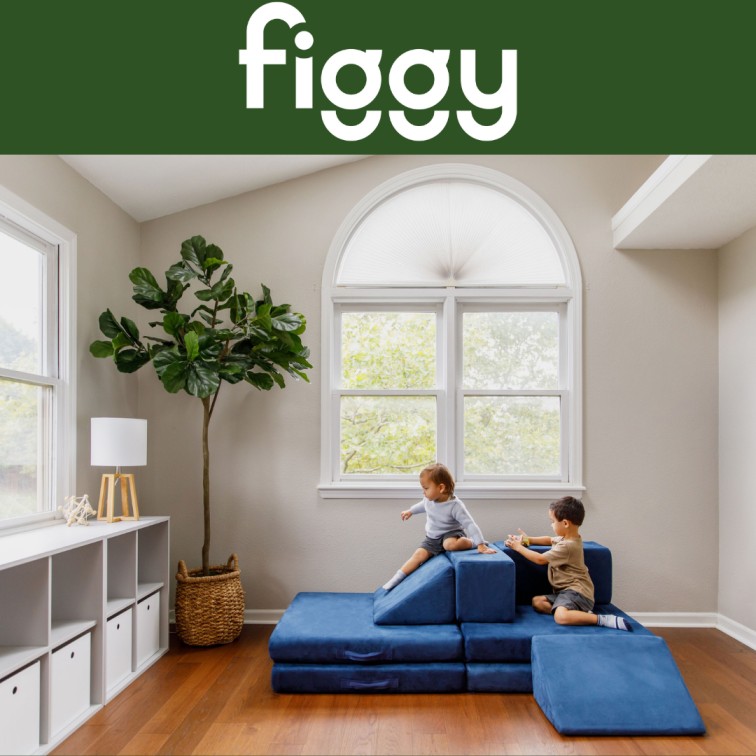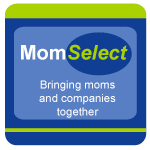Image via Dreamstime Stock Photos & Images
Creativity never stands still. Each year brings new waves of inspiration, techniques, and materials to the world of handmade art—and 2025 is shaping up to be one of the most exciting years yet. As more people embrace slow living, sustainability, and self-expression, crafting has evolved from a nostalgic pastime into a lifestyle movement. From eco-conscious materials and digital-meets-handmade hybrids to a renewed love of community and storytelling, the trends defining this year are as innovative as they are heartfelt.
Whether you’re a maker, seller, or hobbyist, keeping up with craft trends helps you stay inspired and connected to the ever-changing creative landscape. So grab your favorite drink, settle into your crafting nook, and let’s dive into what’s hot in the world of handmade art for 2025.
1. Sustainable Crafting Takes Center Stage
Sustainability isn’t just a buzzword anymore—it’s a creative philosophy. In 2025, eco-friendly crafting has moved from niche to mainstream as artists and hobbyists alike prioritize materials and methods that honor the planet.
Crafters are turning to upcycled fabrics, biodegradable glues, and natural dyes made from plants and food scraps. Reclaimed wood, repurposed metal, and recycled paper are replacing virgin materials in everything from home décor to jewelry design. Handmade creators are proving that “green” doesn’t have to mean “rustic”—modern sustainable art can be as sleek and refined as any mass-produced piece.
This shift is also driving interest in mindful minimalism. Instead of mass-producing crafts, creators are focusing on intentional, small-batch designs made with care. Each item tells a story—not just of artistry, but of responsibility and respect for the Earth.
2. Digital-Physical Fusion: The Rise of “Tech Crafting”
2025 marks an exciting era where technology and traditional crafting merge. Makers are using digital tools to enhance, not replace, handmade art. Think laser-cut patterns on wood, 3D-printed jewelry components paired with hand-beaded details, or digital embroidery designs stitched with old-school precision.
Even AI-assisted design is finding a place in crafting circles—helping artists generate pattern ideas or visualize color palettes before picking up a brush or needle. The key trend, though, is balance. Technology is being used as a supportive tool, not a substitute for craftsmanship.
Online communities are also part of this hybrid evolution. Platforms dedicated to makers are expanding to include virtual craft fairs, tutorials, and collaborations. Some crafters are creating digital printables or downloadable patterns as part of their handmade business, proving that art in the digital age can still feel personal and tactile.
3. Textural Exploration: Layers, Fibers, and Feel
One major aesthetic trend for 2025 is texture—lots of it. After years of sleek, minimalist styles dominating design, makers are rediscovering the beauty of tactile variety. Fiber arts like macramé, weaving, tufting, and crochet are seeing renewed popularity, but with fresh twists: unexpected color combinations, mixed materials, and layered compositions.
Home décor pieces like wall hangings, throw blankets, and woven lampshades are all about dimension. Makers are experimenting with unconventional materials—combining yarn with raffia, jute, fabric scraps, or even paper fibers.
The appeal of texture extends beyond looks. There’s something therapeutic about working with your hands to create depth and softness. These projects invite touch, comfort, and a sense of grounding—exactly what many people crave in today’s fast-paced digital world.
4. Bold Colors and Maximalist Expression
Minimalism isn’t disappearing, but 2025 is seeing a colorful countertrend emerge: craft maximalism. This movement celebrates abundance—layered patterns, rich palettes, and unapologetic creativity.
Crafters are ditching neutral tones for vibrant, expressive hues. Bright pinks, emerald greens, electric blues, and warm ochres dominate this year’s palettes. The mood? Joyful rebellion against monotony.
Mixed-media projects are thriving too—combining paint, textiles, paper, and found objects into cohesive but eclectic designs. Collage art, in particular, is making a comeback, fueled by nostalgia and the desire for creative freedom.
Whether through home décor, fashion accessories, or wall art, bold expression is the name of the game. 2025’s motto: more is more, as long as it’s made with heart.
5. The Return of Handcrafted Jewelry and Wearables
Personal adornment has always been a form of self-expression, but in 2025, it’s becoming more intentional. Handmade jewelry, embroidered clothing, and custom accessories are booming as people seek unique, meaningful pieces over mass-produced fashion.
Natural stones, resin, clay, and upcycled metals are all key materials this year. Polymer clay earrings with organic shapes remain popular, but there’s a growing emphasis on storytelling—designs inspired by personal journeys, heritage, and nature.
Embroidery is also finding new life on clothing, shoes, and bags. Modern stitchers are mixing traditional motifs with contemporary messages, creating wearable art that carries personality and pride.
6. Functional Art for Everyday Life
One of the biggest craft movements of 2025 is functional art—creations that blend beauty and purpose. Handmade pottery, for instance, isn’t just decorative; it’s designed for daily use. Textile artists are producing reusable kitchen towels, baskets, and storage bags that elevate simple household items into pieces of design.
This trend reflects the larger movement toward mindful consumption. People want to surround themselves with objects that feel intentional and personal—things that serve a purpose while sparking joy.
Even DIY furniture and home improvement crafts are gaining traction. More creators are designing small, achievable woodworking or resin projects that can be completed in a weekend but enjoyed for years. Crafting has officially entered the practical realm, bringing artistry to everyday living.
7. Nostalgia and the Handmade Revival
2025 continues the wave of nostalgia that’s swept through crafting since the pandemic years. Vintage aesthetics—from 1970s crochet to 1990s scrapbooking—are being reimagined for a new generation.
Crochet and knitting patterns reminiscent of grandma’s quilts are back, but with a modern twist—think color-blocked cardigans and retro-inspired home goods. Scrapbooking and journaling are also seeing a resurgence, fueled by a desire for tangible memories in an age of fleeting digital photos.
Even analog tools are making a comeback. Typewriters, film cameras, and letterpress printing have found their way back into crafting studios. Makers are rediscovering the tactile satisfaction of “old-school” creativity—the kind that doesn’t require an app or battery, just patience and imagination.
8. Community, Collaboration, and Craft Therapy
Crafting has always had a social side, but in 2025, it’s becoming a full-fledged form of community therapy. Craft circles, workshops, and creative retreats are popping up worldwide, offering people the chance to connect through shared creativity.
In a time of digital overwhelm, these in-person gatherings provide grounding and belonging. Crafting together—whether knitting, pottery throwing, or painting—has been shown to reduce anxiety and increase feelings of connection.
Even online, collaborative crafting projects are trending. Artists are co-creating works across countries, mailing handmade components back and forth, or designing collective digital collages. The spirit of community is thriving in every thread, brushstroke, and bead.
9. Personalized and Meaningful Gifts
As the handmade market continues to grow, more people are turning to personalized, one-of-a-kind creations for gifting. In 2025, customization is king. Engraved jewelry, monogrammed fabric goods, hand-painted portraits, and DIY kits tailored to loved ones’ interests are dominating gift trends.
Craft businesses are also tapping into this by offering customizable templates and on-demand handmade pieces. Buyers appreciate the personal touch—it turns a simple object into a lasting keepsake.
For DIYers, handmade gifting is also a chance to slow down and show love through effort. A handcrafted present says, “I made this for you,” in a way no store-bought item ever could.
10. The Influence of AI and Digital Inspiration
While handmade art remains deeply personal, AI is quietly transforming how many crafters plan and design their projects. Artists are using AI tools to generate visual inspiration, pattern mockups, and digital sketches before translating them into physical creations.
AI isn’t replacing creativity—it’s expanding it. Some crafters use AI-generated prompts to challenge their imagination, blending machine suggestions with human intuition. It’s an unexpected but fascinating partnership between technology and tactile art.
Additionally, the rise of online visual inspiration—like mood boards and digital lookbooks—means crafters have more creative resources than ever. Many use professional-quality stock photos to stage, promote, or visualize their handmade pieces online. These visual tools make small creators look professional, helping their artistry reach wider audiences without losing authenticity.
11. The Business of Craft: Makers Turn Entrepreneurs
The handmade economy continues to thrive in 2025, with more crafters turning passion into profit. Platforms for selling handmade goods—both online and local—are booming. But what’s changing is how makers present their work.
Brand storytelling is now at the heart of successful craft businesses. Customers want to know the why behind the craft: who made it, where the materials came from, and what inspired the design. Beautiful photography, ethical sourcing, and transparency are becoming non-negotiable.
Workshops, subscription boxes, and digital courses are also part of the 2025 craft economy. Many artisans are diversifying their income by teaching others, sharing patterns, or curating monthly creative kits. The idea is simple: creativity isn’t just an art form—it’s a business that thrives on connection and purpose.
12. Wellness Through Making
Finally, the biggest trend tying all others together is the recognition of crafting as a wellness practice. Handmade art is increasingly seen as a form of meditation, therapy, and self-expression. From clay therapy classes to mindful stitching sessions, creativity is becoming a recognized tool for emotional balance.
In 2025, more people are crafting not just to make something beautiful, but to feel better. The process itself—cutting, gluing, painting, shaping—slows the mind and reconnects it to the body. It’s creativity with intention and compassion.
The Future of Handmade: Heart, Hands, and Harmony
As we move through 2025, one thing is clear: the future of handmade art isn’t about trends alone—it’s about meaning. The crafts of tomorrow blend sustainability, technology, mindfulness, and personal expression in ways that celebrate humanity itself.
From eco-friendly materials and tactile textures to digital collaborations and creative self-care, this year’s crafting movement is both forward-thinking and deeply rooted in tradition. It proves that no matter how advanced technology becomes, the human desire to create—to make something real, unique, and heartfelt—will always remain timeless.
Because at the end of the day, handmade art isn’t just about what we create—it’s about how it makes us feel. And in 2025, that feeling has never been more vibrant, connected, or inspiring.








































No comments
We love hearing from you! Thanks for leaving us some comment love! If you're a new follower, please leave your link, so we can follow you back!